You are looking for information, articles, knowledge about the topic nail salons open on sunday near me how do roller coaster designers use math in their careers on Google, you do not find the information you need! Here are the best content compiled and compiled by the Chewathai27.com team, along with other related topics such as: how do roller coaster designers use math in their careers roller coaster engineer math project, geometry roller coaster project, design a roller coaster using functions, calculus roller coaster project examples, roller coaster angles, high school roller coaster polynomial project, roller coaster technology, roller coaster research
Basic mathematical subjects such as calculus help determine the height needed to allow the car to get up the next hill, the maximum speed, and the angles of ascent and descent. These calculations also help make sure that the roller coaster is safe.To accurately model every component of roller coaster design, a branch of math called calculus is needed. Calculus is used to create and analyze curves, loops, and twists along the roller coaster track. It helps with slope calculations and finds the maximum and minimum points along the track.Calculus is a crucial part of the designing of roller coasters. It is used to notify engineers of speeds, velocities, etc. at many different points along the track. This information is used to make sure that all passengers are safe when they ride, and make the coasters enjoyable.
Contents
What kind of math do roller coaster designers use?
To accurately model every component of roller coaster design, a branch of math called calculus is needed. Calculus is used to create and analyze curves, loops, and twists along the roller coaster track. It helps with slope calculations and finds the maximum and minimum points along the track.
How is calculus used in rollercoasters?
Calculus is a crucial part of the designing of roller coasters. It is used to notify engineers of speeds, velocities, etc. at many different points along the track. This information is used to make sure that all passengers are safe when they ride, and make the coasters enjoyable.
How is math used in amusement parks?
How it works: Mathematics enhances the experiences of theme park visitors in many ways. Queuing theory, which is used to estimate the amount of time a person will spend in line at a theme park, helps ensure the satisfaction of visitors by assessing expected wait times in the lines throughout a park.
What program do roller coaster designers use?
Programs such as AutoCAD are used to draft, adjust, and detail designs in accordance with ride standards. 3D CAD software, such as CATIA, SolidWorks, or AutoDesk Inventor, allow designers to have every step in the roller coaster design process contained within one computer program, including: 3D modeling.
How do roller coaster designers use trigonometry?
TRIGONOMETRY IN ROLLER COASTER
“trigonometry allows designers to see how steep and long its descents will be from a given height and over a given distance. This allows them to alter the height and length of a descent exactly to produce the maximum permissible thrill.
Why are parabolas used in roller coasters?
When a coaster falls from the peak (vertex) of the parabola, it is rejecting air resistance, and all the bodies are falling at the same rate. The only force here is gravity. Most people (I am NOT included) enjoy or get a thrill out of parabolic-shaped coasters because of the intense pull of gravity.
How important is differentiability and continuity in designing roller coasters?
If the function that defines the ride is continuous, you will have a great time! But, if it is not continuous there is, you will slightly fall off the track to a perilous end. If it is not differentiable that means there is a sharp bend in the track that will ultimately lead to whiplash.
How do you find the slope of a roller coaster?
To calculate slope, we divide the vertical change (rise) between two points by the horizontal change (run) between the same two points. It’s really important that the x- and y-values from the same point line up!
What type of engineering is roller coaster design?
Roller coaster engineering falls under the domain of the mechanical engineer. Mechanical engineers apply the principles of engineering, physics, and material science for the design, analysis, manufacturing, and maintenance of mechanical systems.
What does it take to be a roller coaster engineer?
The education needed to be a roller coaster engineer is normally a bachelor’s degree. Roller coaster engineers usually study business, mechanical engineering or electrical engineering. 66% of roller coaster engineers hold a bachelor’s degree and 14% hold a master’s degree.
How are roller coaster tracks designed?
The track is usually formed in sections from a pair of welded round steel tubes held in position by steel stanchions attached to rectangular box girder or thick round tubular track supports. All exposed steel surfaces are painted. Steel coasters can be just as complex as wooden ones.
How important is differentiability and continuity in designing roller coasters?
If the function that defines the ride is continuous, you will have a great time! But, if it is not continuous there is, you will slightly fall off the track to a perilous end. If it is not differentiable that means there is a sharp bend in the track that will ultimately lead to whiplash.
How do roller coasters get their power?
The movement of a roller coaster is accomplished by the conversion of potential energy to kinetic energy. The roller coaster cars gain potential energy as they are pulled to the top of the first hill. As the cars descend the potential energy is converted to kinetic energy.
AMS :: Mathematical Moments #114: Going Over the Top
- Article author: www.ams.org
- Reviews from users: 8211
Ratings
- Top rated: 4.8
- Lowest rated: 1
- Summary of article content: Articles about AMS :: Mathematical Moments #114: Going Over the Top Updating …
- Most searched keywords: Whether you are looking for AMS :: Mathematical Moments #114: Going Over the Top Updating
- Table of Contents:
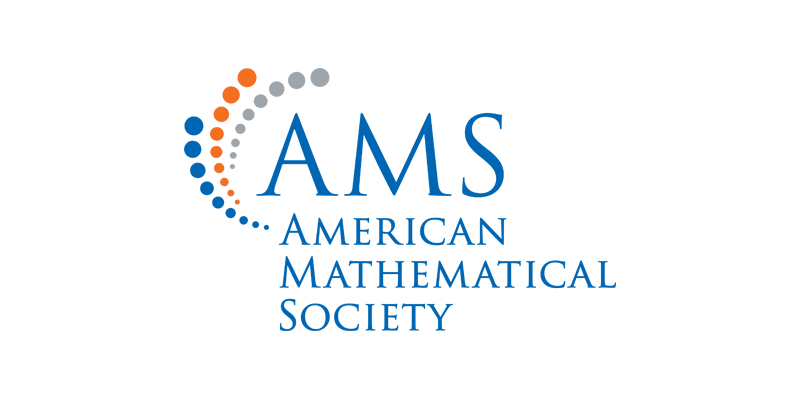
Calculus in Roller Coasters by Keaton Grove
- Article author: prezi.com
- Reviews from users: 43317
Ratings
- Top rated: 4.9
- Lowest rated: 1
- Summary of article content: Articles about
Calculus in Roller Coasters by Keaton Grove
Updating … - Most searched keywords: Whether you are looking for
Calculus in Roller Coasters by Keaton Grove
Updating - Table of Contents:
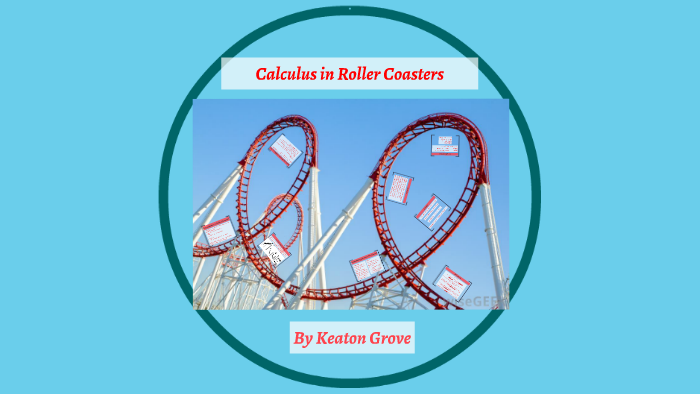
how do roller coaster designers use math in their careers
- Article author: www.siam.org
- Reviews from users: 18136
Ratings
- Top rated: 3.3
- Lowest rated: 1
- Summary of article content: Articles about how do roller coaster designers use math in their careers Updating …
- Most searched keywords: Whether you are looking for how do roller coaster designers use math in their careers Updating
- Table of Contents:

Coasters-101: What software do roller coaster engineers use? – Coaster101
- Article author: www.coaster101.com
- Reviews from users: 41096
Ratings
- Top rated: 4.2
- Lowest rated: 1
- Summary of article content: Articles about Coasters-101: What software do roller coaster engineers use? – Coaster101 Updating …
- Most searched keywords: Whether you are looking for Coasters-101: What software do roller coaster engineers use? – Coaster101 Updating
- Table of Contents:
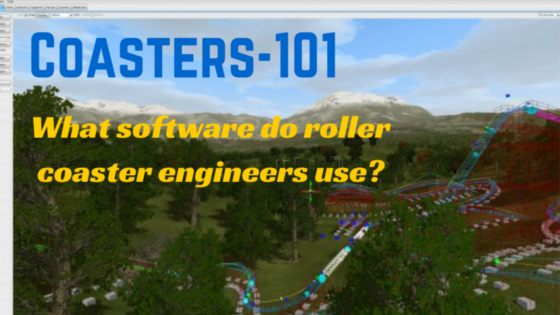
Error 403 (Forbidden)
- Article author: www.quora.com
- Reviews from users: 20881
Ratings
- Top rated: 3.4
- Lowest rated: 1
- Summary of article content: Articles about Error 403 (Forbidden) Building roller coasters requires a large amount of math and physics. First of all, roller coaster designers have to know the maximum velocity of a train … …
- Most searched keywords: Whether you are looking for Error 403 (Forbidden) Building roller coasters requires a large amount of math and physics. First of all, roller coaster designers have to know the maximum velocity of a train …
- Table of Contents:

Math as a Roller Coaster Designer by Evan Anderson
- Article author: prezi.com
- Reviews from users: 12786
Ratings
- Top rated: 4.5
- Lowest rated: 1
- Summary of article content: Articles about
Math as a Roller Coaster Designer by Evan Anderson
This job requires a bachelor’s degree in science in mechanical engineering. Earning this degree requires taking es in calculus, materials engineering, … … - Most searched keywords: Whether you are looking for
Math as a Roller Coaster Designer by Evan Anderson
This job requires a bachelor’s degree in science in mechanical engineering. Earning this degree requires taking es in calculus, materials engineering, … - Table of Contents:
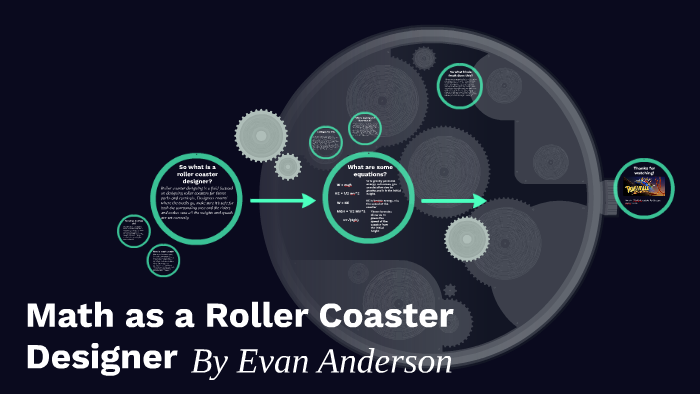
Why be a maths teacher when you can be a roller coaster designer! | My teaching journey
- Article author: blogs.glowscotland.org.uk
- Reviews from users: 36780
Ratings
- Top rated: 4.5
- Lowest rated: 1
- Summary of article content: Articles about Why be a maths teacher when you can be a roller coaster designer! | My teaching journey I learned that these designers use maths to calculate velocity and to help them understand the mathematical properties of curves on a roller … …
- Most searched keywords: Whether you are looking for Why be a maths teacher when you can be a roller coaster designer! | My teaching journey I learned that these designers use maths to calculate velocity and to help them understand the mathematical properties of curves on a roller …
- Table of Contents:
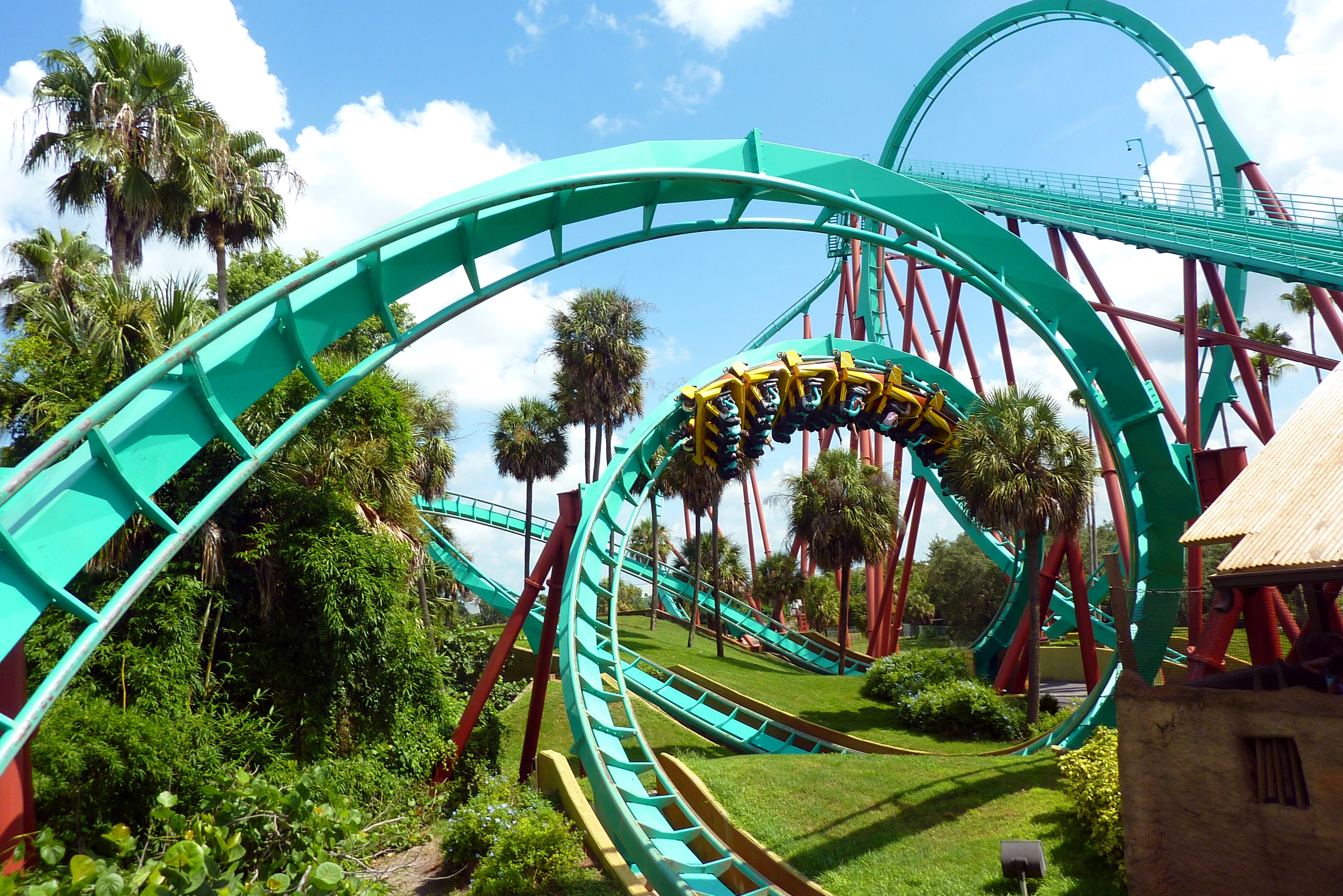
What mathematics is involved in the design of roller coasters? – peel520.net
- Article author: www.peel520.net
- Reviews from users: 1761
Ratings
- Top rated: 4.0
- Lowest rated: 1
- Summary of article content: Articles about What mathematics is involved in the design of roller coasters? – peel520.net These calculations also help make sure that the roller coaster is safe. No doubt about it–math … How roller coaster designers use math in their careers? …
- Most searched keywords: Whether you are looking for What mathematics is involved in the design of roller coasters? – peel520.net These calculations also help make sure that the roller coaster is safe. No doubt about it–math … How roller coaster designers use math in their careers?
- Table of Contents:
What mathematics is involved in the design of roller coasters
How does a roller coaster represent a polynomial
How to design a two dimensional roller coaster
Project Management for Network Professionals
Educational Assignment Is Very Important Thing
How to Select PhD Research Proposal Topics in Economics
The Best Way to Cite a Research Paper

Twists, Turns, and Thrills: The Math of Roller Coasters | Mathnasium
- Article author: www.mathnasium.com
- Reviews from users: 49118
Ratings
- Top rated: 4.8
- Lowest rated: 1
- Summary of article content: Articles about Twists, Turns, and Thrills: The Math of Roller Coasters | Mathnasium Firstly designers sketch a roller coaster showing the placement of hills, twists, and turns using math. Then they make a more technical … …
- Most searched keywords: Whether you are looking for Twists, Turns, and Thrills: The Math of Roller Coasters | Mathnasium Firstly designers sketch a roller coaster showing the placement of hills, twists, and turns using math. Then they make a more technical …
- Table of Contents:

See more articles in the same category here: https://chewathai27.com/toplist.
AMS :: Mathematical Moments #114: Going Over the Top
You might not get many riders to line up for the “Potential Energy-Kinetic Energy Exchanger,” but that gives a pretty accurate description of a roller coaster. Potential energy is high at the peaks and is converted to kinetic energy as the cars plunge down the track. At the low points, the kinetic energy is high, which propels the car back up the track. Basic mathematical subjects such as calculus help determine the height needed to allow the car to get up the next hill, the maximum speed, and the angles of ascent and descent. These calculations also help make sure that the roller coaster is safe. No doubt about it–math keeps you on track.
Roller coaster rides are designed to look and feel more dangerous than they are, so that riders still get the thrills without significant risk. For example, a teardrop-shaped loop appears more perilous than a simple circle. Yet it involves less g-force on the riders upon entrance to the loop than a circle would while still guaranteeing the acceleration necessary to get through the top of the loop. Areas of mathematics such as numerical analysis and differential equations help solve the physics and engineering problems that arise as roller coaster designers, like riders, seek new records in speed, height, and steepness.
Meredith Greer Bates College
Top image courtesy of Amusement Today. Going Over the Top
Meredith Greer relates that when one of her students was working on math and roller coasters she said, “Oh, now I know what parametric equations are all about.”
Math Apprentice
The most exciting roller coaster designs contain one or more loops. The loops must be built with extreme precision. A loop that is too circular will require very high speeds. This would result in a g-force that is too high for people to comfortably withstand. A perfect roller coaster loop is a teardrop shape called a clothoid loop. In a circle, the radius is constant but In a clothoid loop the radius changes and is shorter at the upper part of the loop than it is across the center. This means the roller coaster car can get through the loop at lower entry speeds. Advanced math functions are used to model clothoid loops in computer programs.
Coasters-101: What software do roller coaster engineers use?
Modern roller coasters are designed using the latest in computer technology. What used to be done with paper, pencil, and drawing boards is nowadays done on a computer. The universal tool for the engineer is Computer Aided Design (CAD) software. Changes and iterations are made on a computer in seconds. Programs such as AutoCAD are used to draft, adjust, and detail designs in accordance with ride standards. 3D CAD software, such as CATIA, SolidWorks, or AutoDesk Inventor, allow designers to have every step in the roller coaster design process contained within one computer program, including:
3D modeling
2D manufacturing drawings
Kinematic simulations
Finite element stress analysis (FEA)
Seismic analysis of fixed or isolated structures
High-resolution image renderings for marketing and sales purposes
Utilizing CAD software is an enormous improvement over methods that were employed even thirty years ago. The time required to create a roller coaster from scratch would be quite lengthy without using a computer because of the enormous number of calculations required. Changes and iterations can be made very rapidly using the computer. Multiple track variations for a ride may be presented to the customer to choose their favorite layout. Computers can give detailed information about every point on the ride. Banked turns are formed with smooth-curve algorithms while transitions from straight to curved track are performed with splines – a process that is made easy when the computer handles the calculations.
What software do roller coaster engineers use?
Roller coaster designers use a combination of commercial software and in-house programs. The commercial software is the same platforms used at any other non-coaster engineering firms. Engineers don’t need to know how to use every single CAD system. Chances are, if you can learn how to use one of them the others should be pretty easy to pick up if needed. The list below includes commonly used software in the amusement industry. Aspiring coaster designers should become familiar with at least one system in each category.
Do real roller coaster designers use NoLimits?
Yes, real roller coaster designers do use NoLimits Coaster Simulator, not for engineering purposes necessarily, but to quickly and easily create realistic ride proposals to send to potential customers for bidding on a project. It’s pretty amazing the professional version only costs a one-time fee of $90. It may sound like a lot to an individual, but roller coaster design firms would gladly pay a $2,000+ per year licensing fee to use this amazing tool.
In-House and Automation Tools
Imagine how long it would take to model every single piece of lumber on a wood coaster. For this reason designers have produced their own in-house programs to auto-draw many of the components needed to virtually assemble the ride, such as all the wooden bents and standard bolts. These programs may be separate pieces of software or code written as macros in existing software packages. If you want to get a step ahead as a roller coaster designer, you could learn how to program macros within whatever modeling software of your choice. Using Visual Basic for Applications (VBA), or any other programming language, allows you to write macros to automate repetitive process and increase your design efficiency. It’s definitely not a required skill but it could be very advantageous to your professional career no matter what field you end up in.
Vekoma style track from GrabCad
Resources
Listed below are links to different programs (some free) that are used in roller coaster design and engineering.
So you have finished reading the how do roller coaster designers use math in their careers topic article, if you find this article useful, please share it. Thank you very much. See more: roller coaster engineer math project, geometry roller coaster project, design a roller coaster using functions, calculus roller coaster project examples, roller coaster angles, high school roller coaster polynomial project, roller coaster technology, roller coaster research

